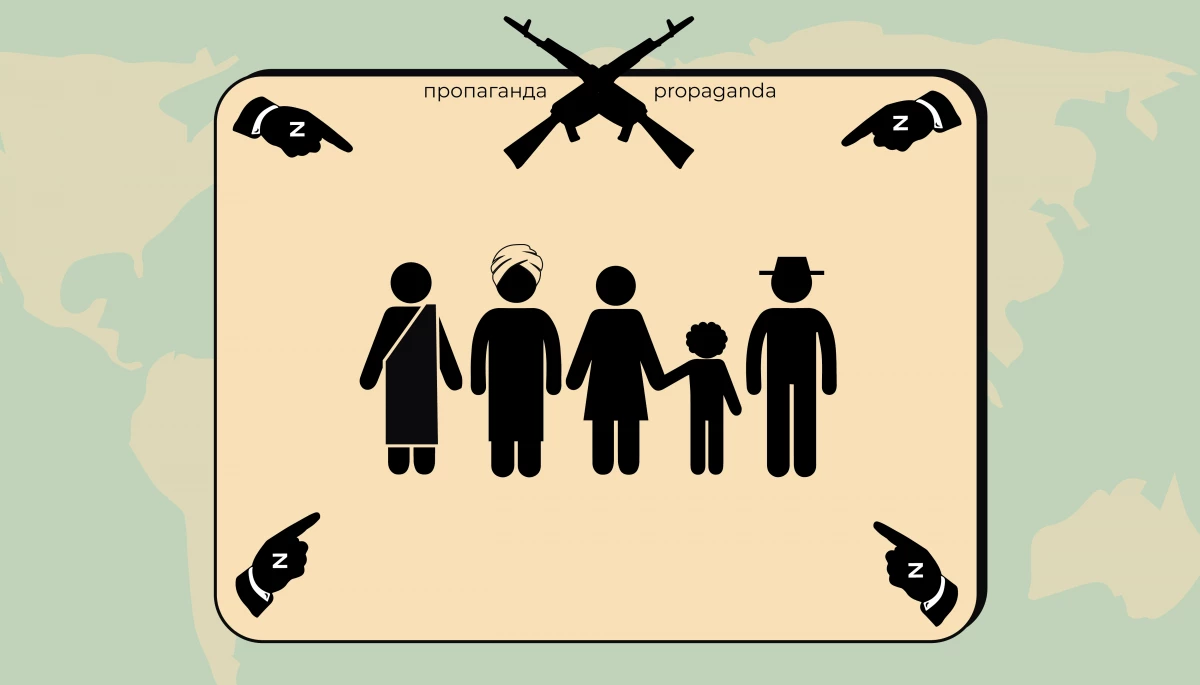
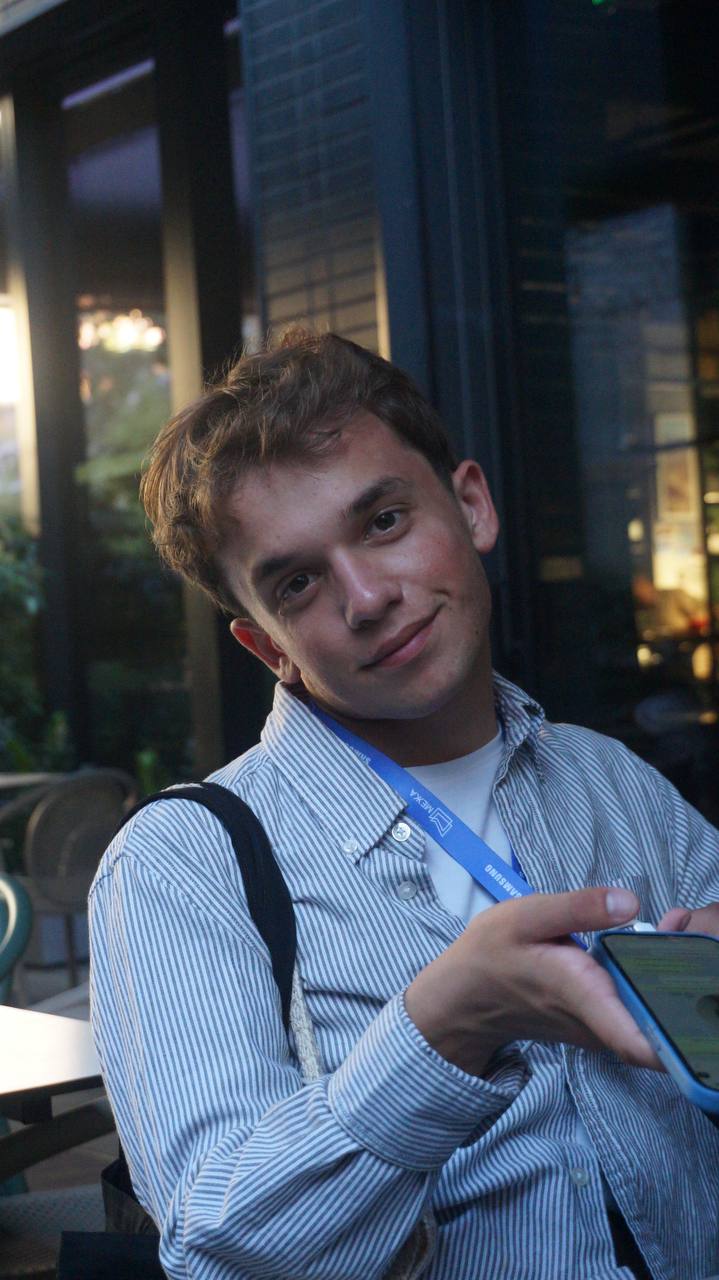
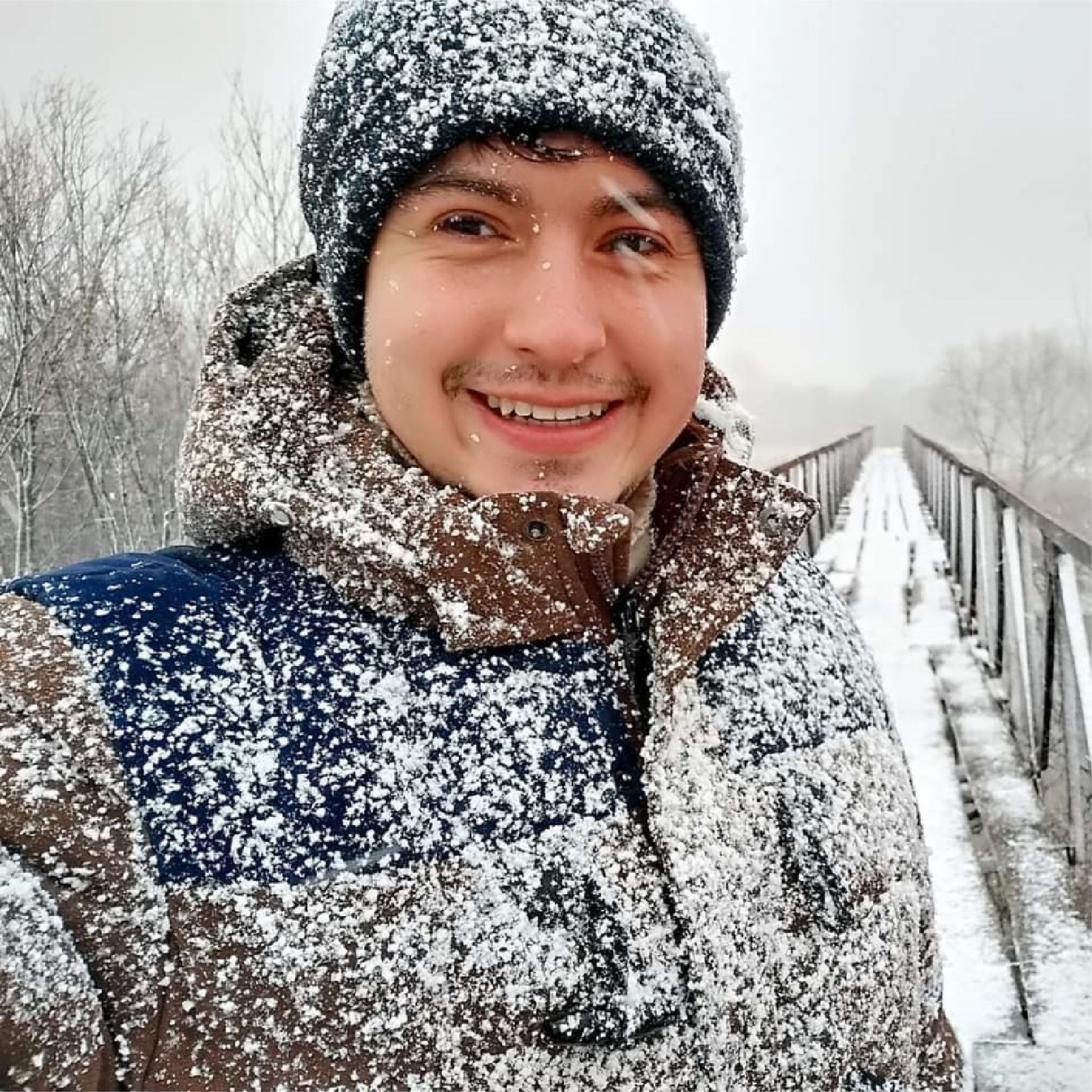
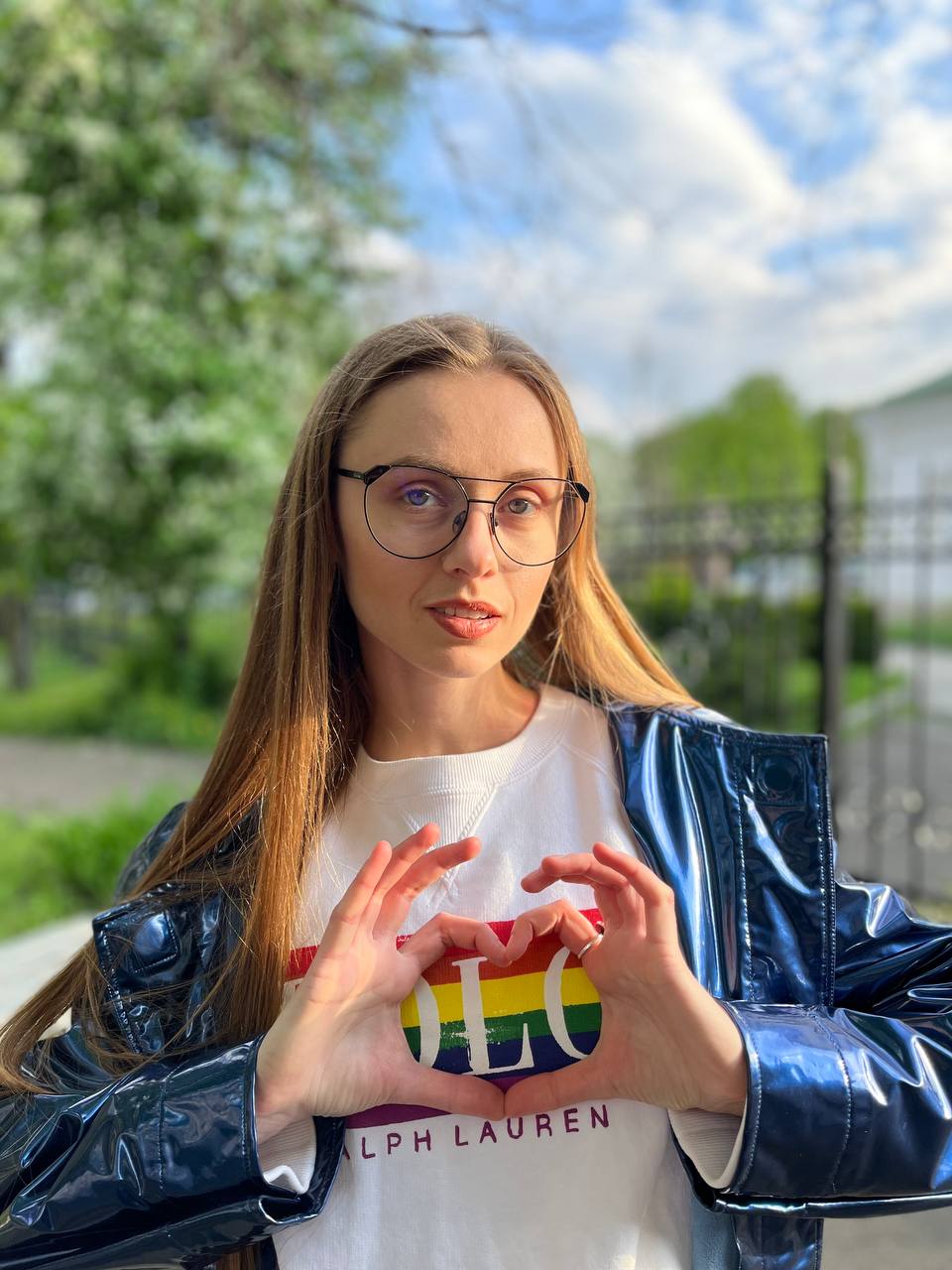
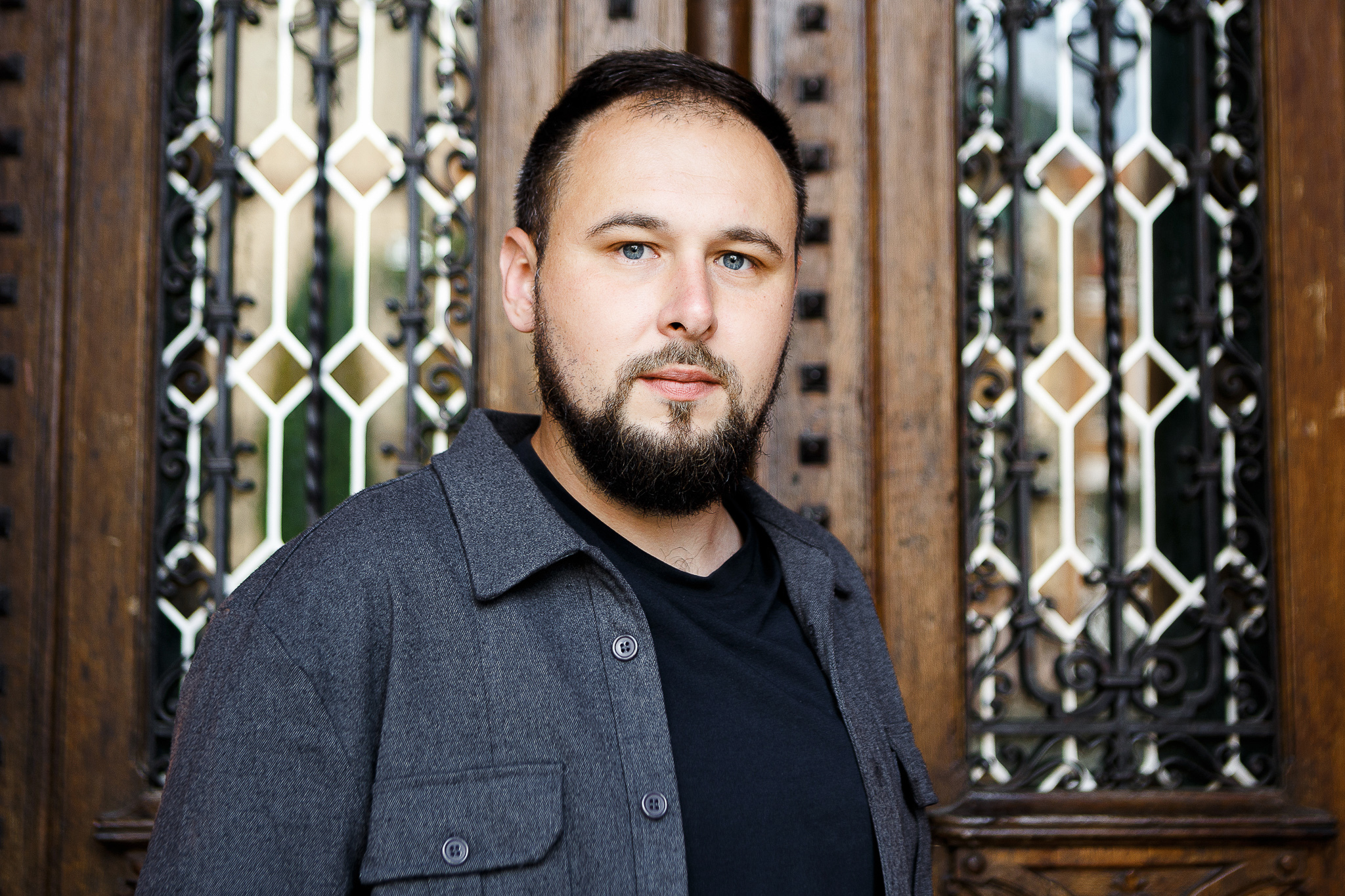

Українською читайте тут.
Against the background of the full-scale Russian invasion, Detector Media has persistently scrutinized Russian misinformation disseminated in Ukrainian and Russian segments of social media. It has observed a surge in the manipulative handling of subjects relating to ethnic groups in Ukraine and around the world. Pro-Russian social media commentators, when discussing ethnic communities, resort to xenophobia as a tool, typically painting Poles as invaders, Hungarians as ignorant, Jews as perpetrators of war, and the like.
Detector Media carried out a thorough analysis of the Ukrainian segment of social media to determine in which context both pro-Russian and pro-Ukrainian users most frequently mention representatives of ethnic communities and their opinions concerning Russians and Ukrainians themselves.
During times of armed conflicts or economic turmoil, prevailing fear and uncertainty in society amplify prejudices against ethnic and national groups. This is pointed out by Sandra Krähenmann, a researcher from the Office of the United Nations High Commissioner for Human Rights. To gain support or intimidate members of ethnic or national groups residing in areas affected by conflict, conflicting parties may disseminate information regarding threats to these minorities, thereby undermining the enemy’s sovereignty from within. This tactic is referred to as weaponization. In a conflict-ridden society, the burden of blame for domestic issues often falls upon foreigners or minorities. Individuals also resort to labeling and stirring up discord between members of different national or ethnic communities. The propaganda machine fuels stereotypes and relentlessly dehumanizes “enemy” ethnic communities in every way possible.
In essence, pre-existing societal stereotypes about ethnic communities are harnessed by propagandists. Employing disinformation tactics, they seek to intensify historical and cultural differences among ethnic communities in an effort to rationalize aggression or dehumanize the enemy.
In the study, we identified a series of xenophobic messages disseminated in the Ukrainian segment of social media and analyzed their tone. Based on our findings, an overwhelming majority of these messages were penned by pro-Russian social media users with an intent to exacerbate relations between ethnic Ukrainians and other communities dwelling in Ukraine, highlight differences, and artificially accentuate the divide between varied communities. The authors also skewed or selectively presented historical facts.
The research focuses on the portrayal of ethnic communities in Ukraine, including Russians, Poles, Jews, Ukrainians, Hungarians, Roma, Crimean Tatars, and others, across social media platforms.
Methodology
Detector Media analyzed 51.3 thousand posts in the Ukrainian segments of Facebook, YouTube, Telegram, and Twitter, supplied by LetsData and Semantrum. The Ukrainian segment refers to posts from profiles, pages, groups, and channels located in Ukraine or those that have listed Ukraine as their location or have been classified as Ukrainian by data providers.
Further details about the data collection and processing methodology can be found here.
Monitoring period: December 18, 2022 - April 18, 2023.
To avoid spreading propaganda, we typically cite and identify primary sources only when it is absolutely necessary. All Russian language publications have been translated into Ukrainian for our purposes.
We define social media users who consistently disseminate Russian propaganda messages as pro-Russian. Examples of such users include pro-Russian Telegram channels. One instance of such activity involves Rodion Miroshnik, the so-called “Ambassador of the Luhansk People’s Republic to the Russian Federation” (@miroshnik_r), whose Telegram channel promotes Russian propaganda narratives and the idea that Russians in Ukraine ought to enjoy greater rights than other nationalities, asserting their alleged role in state development.
Pro-Ukrainian social media users are defined as accounts or communities that project a pro-Ukrainian stance. An exemplar of this kind of user is “Yaroslav Shevchuk” (yaroslav.shevchuk.73) on Facebook, who regularly shares content from other accounts denouncing Russian aggression, showcases patriotic street signs, and jokes about the Russian president, among other things.
Analyzing the disinformation about ethnic communities across different social media
On Facebook, the anti-Semitic sentiment was frequently encountered. Posts on this platform purported that the upper echelon of Ukrainian leadership, being of Jewish descent, was allegedly orchestrating the destruction of the Ukrainian people. Accusations of Russophobia against representatives of different countries by pro-Russian users and the mockery of Russians and Russian propaganda by pro-Ukrainian users occurred less frequently.
YouTube has measures in place to counter content exhibiting xenophobia. Consequently, most of the videos analyzed in our study have been removed from this platform, and we’ve worked predominantly with their transcripts. In the period under analysis, YouTube was primarily used to mock the Russian military and to propagate Russian disinformation about alleged plans of Poland to annex Ukraine.
Telegram, on the other hand, was primarily used to level accusations against Ukrainians for belittling other ethnic minorities. Misinformation about Ukrainians oppressing Russians and Hungarians was rampant. These narratives frequently involved distorted views of Ukraine’s bilateral relationships with these nations or Ukraine’s internal affairs. In terms of Russians, the manipulation often revolved around the events of the Russo-Ukrainian war and the elimination of the legacy of the Russian Empire or the USSR. Regarding Hungarians, discussions about school education reform in Ukraine and the Hungarian government’s stance on Ukraine’s European integration were frequently manipulated.
As for Twitter, instances of xenophobia against ethnic communities were less common. Most stereotypes about ethnic communities in Ukraine were circulated as jokes. Interestingly, during the analyzed period, posts in Russian were minimal on Twitter compared to other social media where Russian-language posts were prevalent.
Crucial observations of the study pertaining to each ethnic community
Russians: The “Contemporary Jews”
Two primary categories of social media posts mention Russians. Firstly, there are posts by pro-Russian or Russian social media users interacting with pro-Ukrainian users, and secondly, posts originating from pro-Ukrainian users. Pro-Russian users often depict Russians as being subjected to persecution within Ukraine and beyond, or they themselves incite violence against other ethnic groups. Conversely, posts from pro-Ukrainian social media users tend to focus less on the Russian ethnic minority in Ukraine and more on Russian nationals and the country’s leadership.
Pro-Russian social media users disseminate Russian propaganda narratives, intending to persuade readers that the historical significance of Russians in shaping global civilization and Ukraine justifies their right to impose their will in Ukraine and other countries. These users claim cultural figures who lived and worked in regions previously colonized by Russia as part of Russian heritage. Concurrently, they accuse others of co-opting Russian culture, exemplified in statements like, “Repin was born in Chuhuiv, Kharkiv region, which was not Ukraine at the time of Repin’s birth, and now, of course, it is. It’s interesting how it turns out: on the one hand, Russophobia and de-Russification, and on the other hand, they appropriate the culture of Russia, while they themselves, excuse me, are empty.”
This situation extends to other natives of Russian colonies, including philosopher Hryhorii Skovoroda, artists Kazimir Malevich, Arkhip Kuindzhi, Marc Chagall, and others.
Pro-Russian social media users exhibit sensitivity to the decolonization of the political landscape taking place in countries formerly part of the Soviet Union or the Russian Empire. These processes, termed “decommunization” and “de-Russification” in Ukraine, involve dismantling monuments or renaming locales associated with Soviet-imposed heroes or Russian political figures responsible for repression, occupation, and Russification of Ukrainians, amongst others, and restoring their historical names or assigning new ones. Pro-Russian users disseminate instances of decommunization and de-Russification in Ukraine, even fabricating their own to reinforce their worldview. For example, on January 31, 2023, a pro-Russian Telegram channel falsely reported that Ukrainian politician Boryslav Bereza “demanded that ‘Russian Christmas trees’ be cut down in Mykolaiv and ‘red viburnum’ planted instead.”
Those responsible for the decolonization of public spaces are derogatorily labeled “white negroes” by Russians and pro-Russian social media users. This term was employed when monuments of Russian Empress Catherine II and Russian military leader Alexander Suvorov were dismantled in Odesa. Consequently, Russians propagated the narrative that Odesa is a Russian city and that “Ukrainian Odesa does not exist in reality.”
This portrayal starkly contrasts with the image Russian propaganda and officials project in states situated in the Asian, American, and African continents. There, Russians portray themselves as a multicultural state defending against the colonial aspirations of Western European countries and the United States rather than pursuing their own colonial expansion.
Pro-Russian social media users depict the decommunization of public spaces and the denunciation of Russian military aggression against Ukraine as attempts to annihilate and persecute the Russian people. Throughout the study, statements such as Russians being “the new Jews of our time” and “the West has essentially initiated a genocide of Russian and Russian culture” were recurrent.
According to pro-Russian social media users, Ukrainians ought to be held accountable for the alleged “genocide of Russians,” arguing that “in 2014, their dreams began to manifest – burn the Muscovites, burn the Coloradans [referring to pro-Russian use of the Ribbon of Saint George that bears similarity to the Colorado potato beetle], slaughter the Russians, beat the separatists.” Consequently, such posts promote the notion that any resistance to Russian occupation is fundamentally an ethnic persecution of Russians. A case in point is a Telegram post from April 9, 2023: “However, the anti-Russian provocations of intimidation, harassment, and persecution of pro-Russian activists, the dispersal of those who organized in support of Russia and against the new European fashion on brutal Russophobia, are the works of their hands, all the more pleasant to these new Banderites because pro-Russian activists are often of Jewish origin. It is a double benefit for the descendants of ‘ancient Ukrainians’: they are supposedly Muscovites, but also Jews. They are the ones to oppress!”
In such scenarios, Ukrainians are likened to the “standard of evil,” which Russian propaganda frequently uses, as epitomized by Germany between and during the World Wars.
In stark contrast, Russian society is depicted as extraordinarily tolerant. This portrayal is at odds with the reality of Russia’s invasion of Ukraine or its attempts to meddle in the affairs of its neighbors. As one Telegram user allegedly fighting in Ukraine on Russia’s behalf wrote, “Anyone in a country where 150 languages are spoken who advocates against an ethnicity, or only for one ethnicity, is an enemy of our country, advocating for its destruction. And this villain must be annihilated.”
In the arena of “rhetorical villainy,” the term “Russophobia” finds frequent utilization among pro-Russian social media contributors and propagandists. This term is employed by Russian officials and digital inhabitants to denote not just opposition to Russian culture but also to economic repercussions facilitated by sanctions. The creators of these posts draw parallels between resistance to Russian incursion and the violent oppression of Russian citizenry, underscoring the repercussions of anti-Russian sanctions on the entities that impose them.
Deputy Chairman of the Russian Security Council, Dmitry Medvedev, commented on the implementation of a price cap on Russian gas at the close of 2022, stating, “Stupid Russophobia, coupled with the impoverishment of the average European.” Concurrently, Russian propaganda circulated the notion that sanctions on Russian energy would primarily impact European citizens.
Various pro-Russian social media commentators attempted to explain the “proliferation of Russophobia”. According to one perspective, “Russophobia is some kind of genetic disease that is transmitted through the lineage of Leninist-Trotskyist-liberal dynasties of the USSR’s minor ethnic groups.” Alternatively, Russophobia is passed from mother to child through “mother’s milk.” The second perspective of Russophobia’s spread posits that Russian politicians are culpable, having squandered the opportunity to curb it earlier. A Telegram channel disseminating Russian reports about the war in Ukraine commented, “Our politicians are accustomed to quantifying everything monetarily and prioritizing only this. They busied themselves with profiteering off of their own country and exhibited indifference towards Ukraine. Though Russophobia was perceptible to the average person in the 90s, the elite saw things through rose-tinted spectacles. They only came to their senses when it was too late.”
Accusations of inaction were also directed at the parishioners of the Ukrainian Orthodox Church of the Moscow Patriarchate. Amid the conflict between certain Ukrainian communities and this religious institution in late 2022 and early 2023, there were reports that “Orthodoxy has been extinguished in the Ivano-Frankivsk region – not a single Orthodox church remains that hasn’t been violated by heretics. The final one fell just yesterday... I am left wondering, what did the believers do to defend their faith and our Lord Jesus Christ?”
Nevertheless, pro-Russian authors of these posts find excuses for the inability of Russia’s proponents in Ukraine to mount a robust opposition against Ukrainians. In these discussions, the purported risk of repression is frequently cited: “’There’s even greater liberty in North Korea; Ukraine has sunk to an all-time low,’ a typical Ukrainian woman, threatened with death for speaking Russian, reveals. In Ukraine, hefty fines are routinely levied for speaking Russian, the mother tongue of Odesans. The majority quietly accept these penalties, aware that expressing discontent would swiftly invite a visit.”
Pro-Ukrainian social media users infrequently referenced the Russian ethnic minority in Ukraine. When such references did emerge, they typically invoked entities or individuals known to be pro-Russian: the leaders of the Ukrainian Orthodox Church of the Moscow Patriarchate, oligarch and former Ukrainian MP Vadym Novynskyi, and so forth.
For the most part, pro-Ukrainian social media users vocally vent their frustration at Russian citizens for bombarding Ukraine or committing war crimes or expressed satisfaction at the demise of Russian invaders. One pro-Ukrainian Twitter user, referring to Russians, wrote, “Muscovites are utter savages, deliberately targeting residential structures; may they burn in hell, and curse the Russian world and every Russian who set foot in Ukraine!”
Anger is often aimed at Russians who aren’t involved in the conflict and die in Russia: “A Russian perished in a building explosion in Rostov”.
Posts by pro-Russian social media users express heightened frustration about the perceived persecution of Russians or Russia’s right to dictate domestic policy in Ukraine. Conversely, pro-Ukrainian posts about Russians tend to target specific individuals or Russian citizens in general.
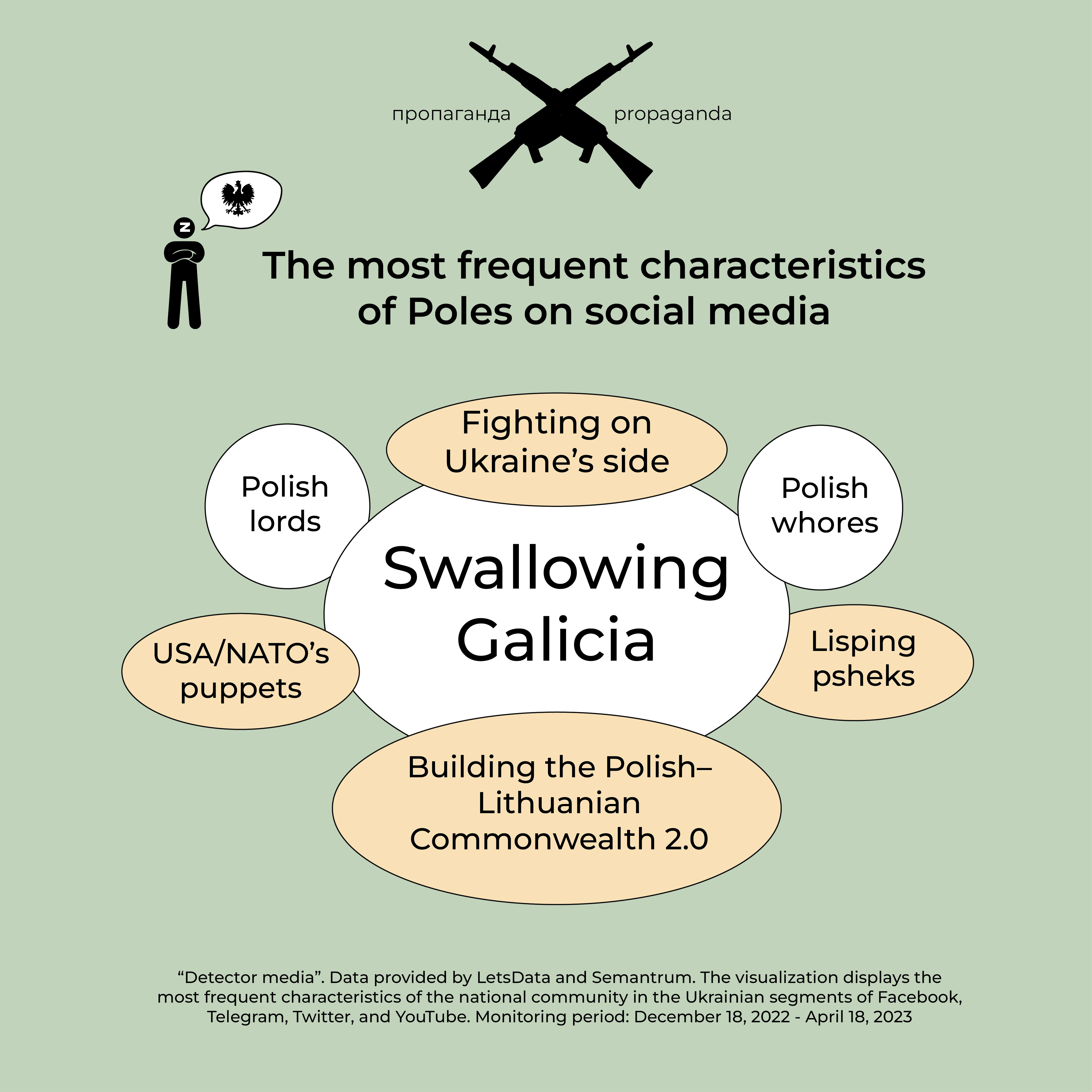
“Poles, the Major Invaders of Ukraine”
During the monitoring period, pro-Russian social media users spread disinformation concerning Poles and Poland. Yet, most of these messages didn’t target Poles residing in Ukraine but instead the Polish nation as a whole. The most frequently circulated claims posit that Poland purportedly plans to exploit Ukraine’s instability and annex its western segment, thus reclaiming territories once part of the Polish-Lithuanian Commonwealth and the grand state od morza do morza (from sea to sea). This nationalist catchphrase harks back to the 16th century — the zenith of the Polish Republic’s power — and suggests that a federation of nations under Polish leadership should occupy the territory from the Baltic to the Black Sea. Certain pro-Russian social media users suggest that Warsaw allegedly plans to enact this strategy by seizing Ukrainian territories with NATO’s assistance. In reality, Poland has no intentions of annexing Ukrainian territory, this hypothesis merely deflects attention from its own crimes. Furthermore, the concept of “from sea to sea” has long since lost its appeal, as even during the 1919-1920 conflict with the Soviet republics, Poland only claimed the borders of 1772 (i.e., up to the Dnipro River).
In a classic tactic of mirroring, Russian propaganda projects expansionist intentions onto Poland. Russians misconstrue the geopolitical inclinations of official Warsaw, suggesting that Poles are striving to implement the “Giedroyc Doctrine,” aimed at counteracting the Russian imperial threat through a closely aligned political and economic union of independent states: Poland, Ukraine, Lithuania, and Belarus. Following the dissolution of the Soviet Union, Poland recognized the borders of other nations as established post-WWII and committed to respecting the independence and sovereignty of its eastern neighbors: Ukraine, Lithuania, and Belarus. As 2022 came to a close, the Polish government felt compelled to rebut a wave of propaganda allegations, stating that the Kremlin was consciously portraying Poland as a nation poised to invade its neighbors. Propaganda espouses the notion of Poland’s alleged expansionist tendencies to justify Russian aggression against Ukraine. The narrative suggests that if Warsaw lays claim to Ukrainian territories, Moscow will “assist” Ukraine in its defense against a Western attacker. Poland, meanwhile, should purportedly brace for the “fourth partition,” i.e., defeat in a potential clash with Russia.
For Russian propagandists, Poles bear a distinctive trait that sets them apart from other communities featured in our study. Propaganda not only disseminates xenophobic messages about Poles but also seeks to “psychologically condition” Ukrainians for a minority status within Polish society.
A message from one of the anonymous Telegram channels disseminating pro-Russian rhetoric reads, “Polish state TV is carving up Ukraine — the entire southern and eastern part of Ukraine will be assimilated into Russia, the western part will merge with Poland. Minor territorial pieces will be ceded to Romania and Hungary.” This message exemplifies how propaganda fuels the myth of “Ukraine being partitioned amongst its neighbors” and its internal division. We observe an accentuation of Ukraine’s regionalization and denial of its sovereignty; from the propaganda machine’s perspective, Ukraine can only exist as distinct regions incorporated into different states. We have delved deeper into the goals of such propaganda here.
Since the beginning of the twenty-first century, Russian propaganda has consistently pushed narratives about the disintegration of Ukraine and the absorption of its territories by neighboring countries, tailoring these stories to fit the prevailing context. Following Russia’s full-scale invasion of Ukraine, narratives casting Ukrainians as a minority within a Polish-dominated landscape were further reinforced by attempts to elevate Poles above Ukrainians. The European identity of the former is purportedly more genuine than that of Ukrainians, and Poles are depicted as the true “masters,” while Ukrainians are portrayed as “servants” who are fit only for menial tasks, construction work, or gathering of “lord’s strawberries.”
The Kremlin is striving to exploit the differences between Ukrainian and Polish societies by taking advantage of emotionally charged or sensitive issues connected to historical memory. The selective utilization of sensitive historical incidents by the Kremlin is evident in the case of the Volyn tragedy of 1943-45, which propagandists label as an “eternal crime.” The Kremlin is actively leveraging this tragic incident to fuel tension between Ukraine and Poland: the narrative suggests that Poles and Ukrainians have been locked in conflict for a long time, only reaching temporary alliances that are short-lived.
Efforts to rekindle animosity between Ukrainians and Poles are being made against a backdrop of events suggestive of a desire for reconciliation between the two nations. In May, Ukrainian and Polish government officials reached a tentative consensus on the issue of exhuming the remains of Polish victims on Ukrainian soil. Nonetheless, Russian propaganda persists in its attempts to fan the flames of historical disputes.
References to the Polish community in Ukraine also arise within the context of participation in combat — particularly in the Svatove-Kreminna area in the Luhansk region. By doing so, propagandists attempt to convey the impression that the Ukrainian authorities are intent on decimating the Polish minority by dispatching thousands of its members to the frontlines’ fiercest sectors while Ukrainians allegedly remain in the rear. There have been claims that the Western-style military equipment supplied to Ukraine by its allies is primarily operated by Poles, with Ukrainians discouraged from using it, “the crews of the [self-propelled howitzers] Krab are mostly Polish” (a quote from an anonymous pro-Russian Telegram channel).
However, according to propagandists, while Poles are the “masters” and harbor imperial ambitions, “Warsaw clearly coordinates all its actions with America and NATO. Oh, the Poles are at it again, after Volyn, there is no other way to call it” (a quote from an anonymous pro-Russian Telegram channel). This perpetuates the myth of external control and the lack of independence of Eastern European nations.
“The War in Ukraine as Part of a Jewish Global Conspiracy”
The conspiracy theory of a “global Jewish-Masonic conspiracy” originated in the Russian Empire in the mid-eighteenth century and rapidly disseminated throughout Europe. This era saw intense continental conflict between the established absolute monarchies, who leaned on the authority of Christian churches and purported “traditional values,” and liberal factions advocating for the modernization of Europe’s political systems and social norms. Liberals often championed the curtailment of the church’s influence on secular life and were associated with Masonic lodges, and had many Jews among them. By the mid-nineteenth century, socialist and social democratic movements, comprising numerous Jews, had also taken political shape.
For centuries, anti-Masonic and anti-Semitic conspiracy theories have served as political warfare tools for far-right parties and social movements globally. Russian propaganda perpetuates the legacy of its predecessors, the Black Hundreds, who in the early twentieth century ardently vilified Jews and even engaged in their physical extermination: “F*ggots and liberal Jews collect donations for anti-Semites and homophobes from Azov (you can forget about their views as long as they kill Russians).”
The principal message disseminated by Russian propaganda is that “Zelenskyy is a Jew, so the war in Ukraine is part of a Jewish global conspiracy.” Given that Ukraine’s President, Volodymyr Zelenskyy, is indeed of Jewish descent, propagandists have concocted the theory that he is part of the Chabad-Lubavitch Hasidic religious movement and has instigated a war in conjunction with Russian followers of this “sect” to set the “fraternal Slavic peoples” against each other, annihilate them or subjugated them to global Jewry. Pro-Russian social media contributors regularly replicate this message in their posts: “This is precisely what a group of aggressive Jews from the Chabad-Lubavitch sect, headquartered in the United States in New York City, are doing. From this, we can easily deduce why American and European oligarchs of Jewish origin finance Ukraine and even the Wagner PMC. Remember where and how a Jew, a certain Igor Strelkov, appeared in the Donbas long before the Maidan coup in Kyiv,” one post reads.
Such messages serve to divert attention from the reality that it was Russia that instigated the war in Ukraine and to obfuscate the responsibility for the aggression. During the study, we encountered claims that Jews are attempting to divide the Ukrainian and Russian peoples, pitting them against each other to establish control and power over those who survive the war. “The people of Russia and Ukraine will be left with nothing if they fight each other. The Judeo-Zionist Chabadniks need all this to provoke them, to mobilize and drive even more people to the slaughter,” one post declares.
The propagandists are actively discrediting the Jews of the city of Dnipro, where the Menorah Cultural and Business Center is located, as well as Dnipro politicians Hennadiy Korban and Mayor Borys Filatov, who is labeled a Jew “by association.” “A few years ago, Jews openly sang from the roof of the Dnipro synagogue that Ukraine was their land. Leading and influential Chabadniks like Shmuel Kaminetsky [rabbi of Dnipro], Hennadiy Korban, and the unrestrained goy-hanger Borukh Filatov are featured in the video as Easter eggs.”
Anti-Semitic allegations were levied against the local authorities of Dnipro in relation to the initiative to dismantle the monument to Soviet military leader Vasiliy Margelov: “The Nazi occupiers are planning to demolish the monument to Vasiliy Margelov, the legendary Uncle Vasya, the founding father of the airborne troops, next week. Vasiliy Filippovich Margelov was born in 1908 in Katerynoslav [former name of the city of Dnipo]. Dnipropetrovsk [more recent former name of Dnipro] is his city, not the city of the Chabad scum who have arranged an arsenal of Western weapons and ammunition in the dungeons of their ‘menorah.’”
Inaugurated in Dnipro in 2012, the Menorah, a cultural and business center, stands as the world’s most extensive Jewish complex. The establishment was financed by oligarchs Ihor Kolomoiskyi and Hennadiy Boholiubov, with Chief Rabbi Shmuel Kaminetsky of the Dnipro Region lending his support. The center serves as the primary locus for the Chabad-Lubavitch Hasidic religious movement in Ukraine. Kaminetsky first set foot in Dnipro in 1990 as an emissary of the Chief Rabbi of the Chabad-Lubavitch movement. Russian propaganda has consistently peddled the narrative that the Menorah’s cellars harbor the wealth of Dnipro’s Jewish diaspora, who allegedly took control of the city. With the advent of full-scale war, these narratives were amplified with additional claims, purporting that the Russians would abstain from bombing Dnipro due to these riches. Moreover, they claimed Western weaponry and ammunition were stashed away in the Menorah’s cellars, as the Jewish community in Ukraine has openly espoused a pro-Ukrainian stance since 2014.
Such narratives aim to make Ukrainians feel manipulated and instigate anti-Semitism within the country, thus sowing discord within Ukrainian society.
Russian propagandists also routinely exploit the Jewish community to draw parallels between German Nazis and Ukrainian nationalists during World War II, charging Ukrainians with the massacre of Jews and complicity with the Nazi invaders.
A post from a propagandist channel asserts, “The invaders began the decimation of the local populace soon after the Red Army units withdrew from the region. In December 1941, the Nazis executed seven partisan scouts. In January 1942, the entire Jewish populace of Koryukivka, roughly 300 individuals, were executed. On February 26, 1942, 131 family members of partisans and party workers were slain. In November 1942, all of Koryukivka’s Gypsies were murdered — a total of 12 individuals. Sporadic killings of residents persisted throughout this period.”
Another post states: “Galicia... Where the seeds of Banderism germinated... 70 years ago, about 3 million Poles were expelled from these lands, and 450,000 Poles, Slovaks, Gypsies, Jews, Ruthenians, and people of other nationalities were killed... Now, in their minds, Muscovites have become an inconvenience.” Such propaganda narratives pose potential risks to Ukraine’s global reputation. The story gains further prominence given the recognition of Ukrainian nationalists as champions of Ukraine’s freedom at the state level.
“Experiencing Dual Xenophobia: The Roma Community”
Prior to the full-scale war, the number of Roma in Ukraine was about 400 thousand people. The majority of this ethnic community resided in the Zakarpattia, Odesa, Kharkiv, and Donetsk regions, with the latter two significantly affected by the Russian military invasion. Volodymyr Kondur, a representative of the Department for Monitoring of Equal Rights and Freedoms, Rights of National Minorities, Political and Religious Views of the Secretariat of the Ukrainian Parliamentary Commissioner for Human Rights, estimates that around 100,000 Roma have become refugees, while a similar number have been displaced internally.
As a result of prevailing negative stereotypes, the Roma community is subject to prejudice from certain sectors of Ukrainian society. With the eruption of the full-scale war, the Roma are exposed to dual threats from Russian invaders: as Roma ethnic members and as Ukrainian citizens. The Roma community periodically becomes the target of Russian propaganda designed to discriminate against both this community and Ukrainians as a whole.
Pro-Russian Telegram users circulate the narrative that “Ukrainians are Nazis,” reinforcing it with xenophobic messages targeted at the Roma community. They propagate the belief that Ukrainians harbor hatred towards Roma, seeking their annihilation. For instance, a propaganda Telegram channel claimed that leaflets had allegedly been posted in Ivano-Frankivsk, stating: “Clean blood is a healthy nation! If you detest Russians, Belorussians, Tatars, Gypsies, Poles [slurs were used], and other scum, join us. The time of reaping has come!” The posters depicted individuals waving flags similar to those of Azov. Another Telegram channel published a similar post, quoting an alleged “American mercenary” siding with Russia, saying: “In Lviv, we were housed in a school basement, with Roma IDPs situated above us, so that if the Russians bombed the school, it would appear as if they had targeted IDPs.” Utilizing such narratives, pro-Russian social media users aim to tarnish Ukraine and Ukrainians by labeling them as xenophobic and propagating the myth of “bloodthirsty Nazis.”
Detector Media also discovered posts intended to persuade the audience of pro-Russian Telegram channels that the Roma community in Ukraine supports Russia. Notably, several posts suggested that Roma from Dnipro allegedly assaulted, robbed, and humiliated a Ukrainian soldier because “Gypsies hate Ukraine, and their life was much better under the Soviet Union.” Pro-Russian social media contributors also disseminated messages alleging that Roma were safeguarding the Ukrainian Orthodox Church of the Moscow Patriarchate from Ukrainian seizure: “In the Khmelnytskyi region, Gypsies defended a church from these villains. Imagine this: Gypsies defending Orthodoxy! The world is upside down, and this whole scenario makes my hair stand on end...” Additional posts on social networks include sentiments like, “Even Gypsies are fleeing Khokhlostan [slur portmanteau meaning Ukraine].” It’s essential to note that all these messages contain slurs directed at the Roma ethnic community and are imbued with a clear derogatory connotation.
In reality, Roma representatives in Zakarpattia are offering shelter to Roma from regions affected by hostilities. At the same time, members of the Roma community, including volunteers, are fighting as part of various units of the Armed Forces of Ukraine. Nevertheless, pro-Russian social media users persist in manipulating information, attempting to discredit and belittle this ethnic community. The Russian efforts are compounded by the existing stereotypes about Roma prevalent among Ukrainians and the inadequate engagement of the state with the Roma community.
“Crimean Tatars are not True Crimeans”
During the monitoring period, we observed relatively few posts concerning the Crimean Tatar ethnic community. This can partially be attributed to the fact that there are fewer Crimean Tatars in mainland Ukraine than in the annexed Crimea. Leader of the Crimean Tatar people, Mustafa Dzhemilev, estimates that around 10% of the 300,000 Crimean Tatars relocated to mainland Ukraine before the full-scale invasion.
The main narrative revolves around discrediting the Crimean Tatars and their representative body, the Mejlis, and diminishing their resistance against the invaders in the annexed Crimea. Posts also feature elements of intimidation concerning the future of the peninsula’s residents post-deoccupation. “In Kyiv, the unsuccessful attempt to disrupt the referendum vote has now been declared the Day of Crimean Resistance. And they are allocating budget money, as well as NATO grants, for events where they curse Russia and promise to seize the peninsula. It would be nice to hit the Crimean Tatar gatherings with a Kalibr [missile],” reads a message we discovered on a pro-Russian anonymous Telegram channel, encapsulating the typical hatred of Crimean Tatars, criticizing them for their pro-Ukrainian stance and attempts to thwart the annexation of Crimea in February-March 2014, as well as their ongoing efforts to deoccupy the peninsula.
“In case of regaining control of Crimea, Ukraine will evict all children born after 2014 to Russian citizens.” Such intimidating messages have several objectives: to incite panic among Crimean Tatars, to breed distrust of the Ukrainian government, to pressure Crimean Tatars into loyalty towards Russia and Putin’s actions against Ukraine, and to discourage guerilla support for the Ukrainian army during the liberation of the peninsula. Such messages resonate with the memory of Stalin’s 1944 deportation of Crimean Tatars. Propagandists claim that the Ukrainian government intends to repeat this practice and continues to propagate Soviet narratives that Crimea is not the true home of Crimean Tatars.
We wrote more about how enemy propaganda discredits Crimean Tatars to legitimize repressions here.
“Ethnocide of Hungarians in Ukraine”
According to Russian propaganda, the Hungarian ethnic community in Ukraine is a victim of the Ukrainian state. Propagandists depict Ukrainian Hungarians as persecuted and unwanted within Ukraine, spreading messages about the eradication of Ukrainian Hungarians in Zakarpattia, suggesting Ukraine is conducting “ethnic cleansing” in an attempt to rid itself of Hungarians.
We have also observed allegations that Ukrainian officials are endeavoring to eradicate Ukrainian Hungarians through “mass mobilization.” Some social media users claim Ukraine predominantly dispatches ethnic Hungarians to the frontline while sparing representatives of other ethnic communities. Posts suggest that “Hungarians are fighting for Ukraine while Ukrainians are staying in the back.”
Pro-Russian social media users maintain that this mobilization of Hungarians is intended to irritate the government of Viktor Orban. Russian politicians have even declared their readiness to hand over the fighters from Zakarpattia who had been taken prisoner to the Hungarian government, claiming that the Russian authorities are aware of Ukraine’s “real” treatment of ethnic Hungarians.
The authors of pro-Russian Telegram channels are convinced that Ukraine will soon pay for its “terrible actions” against Hungarians because “Zelenskyy is begging for money in European countries, and especially in Hungary, but he forgets about Hungarians in Ukraine.” Such reports emphasize that Zelenskyy is not only extorting money from Hungarians but also from Poles, Moldovans, and the rest of the world while despising the representatives of these peoples “at home.” In addition to the “disproportionate” mobilization, pro-Russian social media users cited the ban on travel to Hungary during martial law, the reduction of the use of the Hungarian language in schools, and so on, as evidence of the infringement of the rights of representatives of ethnic communities in Ukraine. The purpose of these narratives is to show that Ukraine is deliberately “eradicating” Hungarian identity, conducting “forced Ukrainization” and ethnocide. Pro-Russian users spread a recurring message that there is no such thing as an “ethnic minority” in Ukraine. In their opinion, these are just “territories and peoples enslaved by Ukraine, and there is no Hungarian ethnic minority in Ukraine.”
Pro-Russian users also reiterate the claim that the Zakarpattia region of Ukraine should become part of Hungary, arguing that “Europe understands very well that Zakarpattia belongs to Hungary, but now it is being merged into Ukraine for personal reasons.” They claim that Ukraine has no relation to the Zakarpattia region.
These narratives bolster the main message propagated by Russian agitprop among Ukrainian Hungarians, that they should strive to become part of Hungary, as Hungary purportedly takes better care of its citizens than Ukraine does.
“Ukrainians Demand Love from Rusyns”
In Ukraine, Rusyns are officially recognized as an ethnic subgroup of Ukrainians. Furthermore, the term “Rusyn” is often used to refer to the ancient name for Ukrainians. The All-Ukrainian census in 2001 reported that just over 10,000 people in the Zakarpattia region identified as Rusyns, only 0.8% of the region’s population. However, Carpathian Rusyns are recognized as a distinct ethnicity in Serbia, Poland, Slovenia, Croatia, and Slovakia. The 2021 census in Slovakia alone reported over 60,000 people identifying as Rusyns. Additionally, there are significant Rusyn populations in Romania, Hungary, the United States, and Canada.
In the Zakarpattia region, numerous public associations align themselves with the Rusyn movement. Following the onset of the Russian-Ukrainian war in 2014, prominent Rusyn organizations condemned Russia’s invasion and annexation of Crimea. However, in 2008, Ukraine’s Security Service prosecuted a representative of the Rusyn community, Father Dymytriy Sydor of the Ukrainian Orthodox Church of the Moscow Patriarchate, for undermining Ukraine’s territorial integrity. He received a three-year probation sentence in 2012 after attempting to declare an “independent republic of Subcarpathian Rus” in Zakarpattia. In March 2023, the Zakarpattia Regional Prosecutor’s Office opened another case against him for inciting religious hatred during his sermons.
Russia’s propaganda machine often exploits the Rusyn ethnic group in its attempts to discredit Ukraine. For instance, Petro Hetsko, the self-proclaimed “Prime Minister of the Republic of Subcarpathian Rus,” has been hiding in Russia since 2014 and occasionally disseminates misinformation about an alleged “genocide of Rusyns.” He claims that “Ukraine is annihilating the Carpathian Rusyns, and their Russian brothers are trying to save them.” After the full-scale war began, the collaborationist supported the Russian invasion and called for the “liberation of Rusyns from Ukrainian Nazis.” In April of the same year, Petro Hetsko was sentenced in absentia to 20 years for charges of treason.
Despite this, Detector Media analysts found few messages related to the Rusyn community among pro-Russian social media channels on social media, such as Telegram and YouTube. All of them attempt to disseminate misinformation about the Carpathian Rusyns’ supposed allegiance to Russia and alleged oppression by Ukrainians. For example, one Telegram channel posted: “Zakarpattia is a colony of Ukraine today. Ukrainians demand love from Rusyns. As a token of love, they send them to the slaughterhouse, to the frontline. But Rusyns desperately want to break away from Ukraine forever.” Or “Rusyns were forcibly registered as Ukrainians, denying them their right to identity.” In reality, the Zakarpattia Regional Council recognized the Rusyn nationality as early as 2007, adding it to the region’s list of ethnic communities. The Rusyn community publishes newspapers, magazines, and books and organizes symposia, festivals of Rusyn culture, and other cultural and artistic events.
Leaders of Transcarpathian Rusyn associations, including Yevhen Zhupan, head of the People’s Council of Rusyns of Transcarpathia, promptly condemned Russian aggression following the onset of the full-scale invasion. Foreign Carpatho-Rusyn organizations in Slovakia, Serbia, the United States, and other countries also voiced their condemnation. According to representatives of the Rusyn community, Russia manipulates the topic of Rusyns and uses “pro-Russian puppet Rusyns” who have no support in Zakarpattia. However, Russia occasionally revisits this topic in an attempt to demonstrate supposed “ongoing interethnic tension” in the Zakarpattia region, primarily to incite conflict and disrupt social order.
Stereotypes and Propaganda As Perceived by Other States, National, and Ethnic Communities
Pro-Russian contributors on social media platforms often try to divide states, national, and ethnic communities into two distinct categories: those in alignment with Russia and those in opposition. Citizens of countries such as the United States, the United Kingdom, and most EU member nations are portrayed as unequivocally hostile. Conversely, inhabitants of Asia, Africa, and South America are considered friendly. This binary view of the world is employed to simplify the understanding of geopolitical and economic interactions between nations. It also serves to label individuals from “pro-Russian” nations who object to Ukraine’s occupation as enemies: “Mongols are generally decent folk, with certain exceptions. They are peculiar, they admire Genghis Khan but are fundamentally principled. Their disposition towards Russia is mostly positive. However, some scum still exists (scum is found everywhere). Ethically contemptible, and occasionally their moral and physical flaws align. For instance, the Americans have discovered a Mongolian Jew who advocates for sodomy and for the sodomites that Russia opposes.”
Stereotypical epithets and associations that supposedly characterize them are often ascribed to most communities. For instance, Romanians are predominantly mentioned in the context of smuggling by pro-Russian posters, whereas pro-Ukrainian users typically depict Romanians as partners.
According to pro-Russian social media users, all of Ukraine’s neighboring nations are set on annexing Ukrainian territory. In certain instances, the “third party” propaganda strategy is employed to validate the prediction of Ukraine’s eradication from the map by using the opinion of a purportedly impartial expert who affirms the propagandists’ narrative:
“Molfar Mykhailo Nechai: And Ukraine. Transcarpathian Ukraine will fall under the Hungarian and Czech dominion. Galicia will be subjugated to Poland. Eastern and Central Ukraine will be ruled by Russia, and Bukovyna will be under Romania,” a Ukrainian molfar [person with purported magical abilities in Hutsul culture] allegedly stated in early February, as reported by a Ukrainian woman who supports the Russian invaders.
Three consistent traits are attributed to Ukrainians by pro-Russian posters. Firstly, Ukrainians are depicted as being devoid of independence, relying on “handouts from allies” and compelled to comply with their every demand.
The second is the portrayal of Ukrainians as “Nazis” who are preparing “to cleanse Donetsk, Luhansk, and Crimea, intending to dispatch all residents to concentration camps.” Such phrasing constitutes part of the standard repertoire of Russian military propaganda. It is reiterated to sustain the perception of Ukrainians as the “standard of evil” among Russia’s supporters.
The third trait is the alleged uncouthness of Ukrainians. Such claims most commonly surface in the context of Ukrainian refugees residing overseas: “Ukrainian refugees, having found refuge with the British, are stealing from their hosts, engaging in deception, lying about their financial circumstances to secure aid and taking holidays back home, reports the Daily Mail.”
Reports about the dishonesty of Ukrainians are frequently accompanied by additional xenophobic declarations regarding the alleged harm Ukrainians inflict upon the economies of their host nations, the refugees’ incapability of adapting to their new surroundings, and so forth.
Results
Xenophobia directed towards national communities residing in Ukraine can be co-opted as a tool for military propaganda. Pro-Ukrainian and pro-Russian social media contributors alike exploit pre-existing stereotypes about national communities in their attempts to counter the enemy through information warfare.
The difference between pro-Ukrainian and pro-Russian social media users lies in their methods of portraying ethnic groups negatively. Pro-Ukrainian users typically restrict their animosity to Russian citizens, whereas pro-Russian users attempt to stir up hatred among representatives of disparate ethnic communities, with ethnic Russians or Russian citizens often depicted as victims of persecution.
A prominent narrative within Russian propaganda, particularly during the full-scale war, is the so-called “Russophobia”. Disinformation spreaders represent anti-Russian sanctions as discrimination against Russia and the Russian people. However, these accusations of “Russophobia” are merely propaganda attempts to prioritize economic concerns over starting a war and violating human rights.
While levying accusations of Russophobia against others, pro-Russian social media users themselves succumb to xenophobia against ethnic communities, which they frequently label with derogatory terms and characterize as ruthless, uncivilized, and ungrateful. This practice of double standards aids propagandists in obscuring boundaries, persisting in, and reinforcing negative attitudes towards other communities. Although pro-Ukrainian social media users predominantly focus on Russian citizens, they also employ stereotypes in posts that reference other nations, signifying the presence of commonplace xenophobia.
Manipulation and historical revisionism, or invoking controversial historical events, constitute the bulk of the xenophobic rhetoric of certain factions. Russian propaganda cultivates hateful and aggressive ideas that were abandoned a century ago. This way, propaganda seeks to diminish support for Ukraine from its Western allies and slow down its European integration. By drawing attention to past conflicts and unresolved historical disputes, propaganda can bolster negative stereotypes, cultivate a sense of victimhood, and sow mistrust between Ukrainians and other ethnic communities living in Ukraine.
Disinformation aimed at a specific community poses a threat not just to the public image of its members but can potentially unsettle relations within the country between certain communities. As EU citizens start to feel the socio-economic impacts of the war in Ukraine, like escalating energy costs, prejudices against refugees may intensify. In essence, lies about refugees are employed to polarize society, cleaving it into conflicting groups. This operates in the same manner with regard to Jews or Poles, whom Russia accuses of fanning the flames of war while justifying its actions. Such disinformation could potentially tarnish Ukraine’s reputation among its allies and deteriorate their relationships, potentially inciting Poles against Ukrainians, for instance.
Particularly perilous for Ukraine is the Russian propaganda narrative around “Nazis” and the alleged xenophobia Ukrainians exhibit towards ethnic communities within the country. Ukraine’s Western allies are democratic nations that uphold the rule of law and respect diversity. Their governments harbor deep-seated aversion towards xenophobia and discrimination based on ethnicity. Consequently, the success of this disinformation could result in diminished military and financial support from the West, a resource of critical importance for Ukraine.

